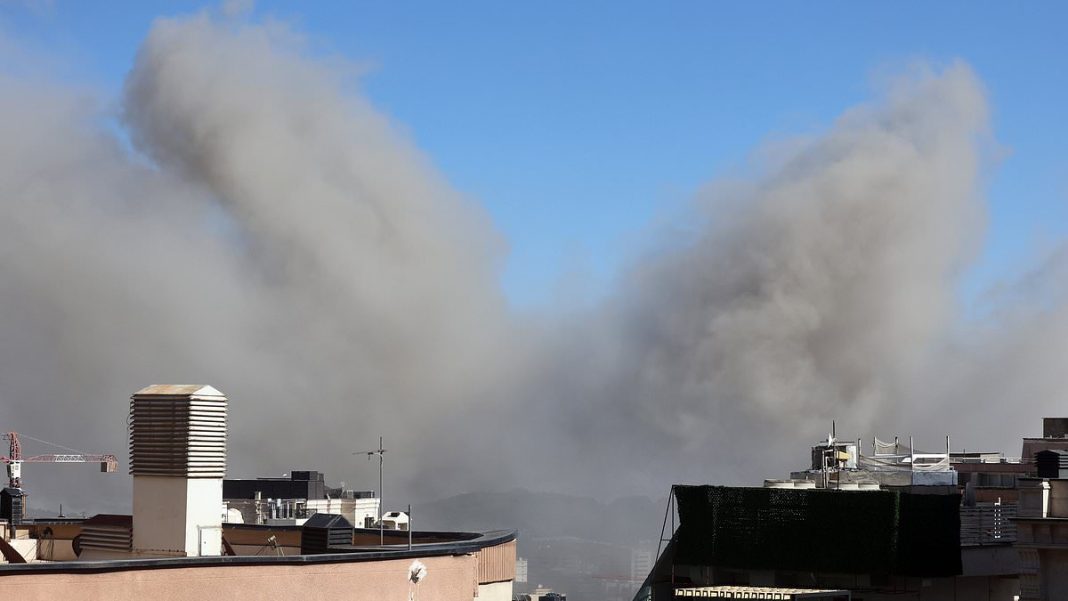Scientists spot a mysterious ‘ghost plume’ in Oman,
A mysterious ‘ghost plume’ has been spotted beneath eastern Oman.
Emanating from the Earth’s core, this hot pillar of soft rock is pushing upwards from 410 miles (660km) beneath the planet’s surface.
Until now, the ghost plume was hidden because it hadn’t broken through the surface to form volcanoes.
But in a study researchers have proved the ‘ghost plume’ exists by looking at how it slows down passing earthquake waves.
Since waves move slower through hot, soft rock, this is a key sign there is a plume hidden beneath the surface.
Having shown that one ghost pillar exists, the researchers say there might be many more waiting to be found around the world.
Worryingly that might mean the Earth’s core is leaking heat faster than scientists previously thought.
Lead author Dr Simone Pilia, of Saudi Arabia’s King Fahd University of Petroleum, Engineering and Geosciences, told MailOnline: ‘It’s a reminder that surface silence doesn’t mean the mantle is quiet.’
Ghost plumes are a type of mantle plume, pillars of hot rock which form when heat wells up from the boundary of the Earth’s outer core, some 1,800 miles (2,890 km) beneath the surface.
These are usually easy to find because they produce lots of volcanic activity at the surface as the molten rock is forced upwards.
Dr Pilia says: ‘A ghost plume is a mantle plume that doesn’t produce observable surface volcanism, making it essentially “invisible” to traditional geological observation.’
Although there are no volcanoes in Oman, Dr Pilia noticed that seismic waves from earthquakes slow down as they travel through this area.
By analysing the way these waves were warped, Dr Pilia, who named the feature ‘Dani’ after his son, realised that there might be a cylinder of hot rock hidden beneath the ground.
Dr Pilia and his co-authors used geological evidence and computer simulation to show how the presence of a mantle plume fits with what geologists already know about the area.
Together, this evidence created a strong case that there is an elusive ghost plume lurking underground.
Dr Pilia says: ‘Despite lacking surface volcanic activity, all the deep-Earth signals of the plume are there.’
Based on this evidence, the plume is likely to be a cylinder around 125 to 185 miles in diameter (200-300km) and extends at least 410 miles (660km) deep.
The rocks within the plume are up to 300°C (540°F) hotter than the surrounding mantle.
Although these rocks are extremely hot, the researchers say the plume isn’t producing volcanic activity due to a ‘lid’ of rock near the surface.
Unlike above many other plumes, this 60-mile-thick (100km) layer of rock prevents the plume from melting its way to the surface.
Dr Pilia says: ‘Even if the plume is hot – and our data suggest it is – the pressure at those depths makes it very hard for melt to form and reach the surface. So, the plume exists, but it’s essentially trapped.’
Luckily for the people of Oman, Dr Pilia says this means the plume is ‘very unlikely’ to produce any volcanic activity in the foreseeable future.
According to the modelling, the plume has been there for at least 40million years, during which time it affected the drift of the Indian continental plate.
The plume may also explain why parts of Oman continue to rise even after tectonic compression, a process which squeezes the Earth’s crust together, has stopped.
Most importantly, this discovery also suggests that there may be many other ghost plumes out there waiting to be discovered, especially under areas with thick rock caps.
That would mean more heat is leaking from the Earth’s core than researchers previously thought, which could have big implications for the study of Earth’s inner layers.
Mantle plumes are a key part of how the Earth distributes heat and pressure deep beneath the surface.
Studies have shown that they are closely linked to plate tectonics, the planet’s magnetic field, and even the evolution of life on Earth.
Dr Pilia says there are ‘likely’ many more ghost plumes around the world but these may be small and hard to spot without special networks of seismic detectors.
‘What makes the Dani plume stand out is that we had just the right data, in just the right place, to finally see it.
‘It’s a reminder that surface silence doesn’t mean the mantle is quiet.’






